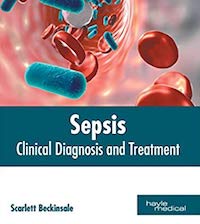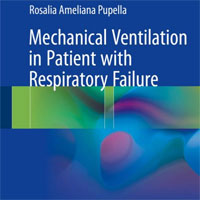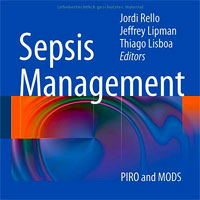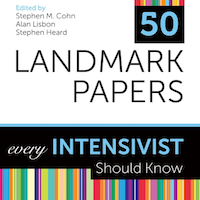Tag: ICU
Pre-ICU Statin Use, AKI and in Hospital Mortality in Sepsis Patients
Pre-ICU statin therapy is associated with a lower risk of acute kidney injury (AKI), and improved in-hospital survival among obese patients with sepsis, suggesting its potential role as a protective measure in this high-risk... read more
Trauma Team Dynamics: A Trauma Crisis Resource Management Manual
This is the first book exploring the unique dynamics created by a multidisciplinary trauma team and how crisis management strategies can improve teamwork and communication and, potentially, improve patient resuscitation... read more

The Triglyceride Glucose Index and Delirium Risk in Sepsis Patients
The triglyceride glucose (TyG) index represents a straightforward and efficacious instrument for nursing staff to ascertain the likelihood of delirium in patients with sepsis during the routine monitoring of their condition.... read more
Factors Influencing the Mortality of Patients with Subarachnoid Hemorrhage in the ICU
Spontaneous subarachnoid hemorrhage (SAH) is a prevalent condition for those between the ages of 50 and 60 years, with a high mortality rate in severe cases. The findings of this study indicate that a history of loss... read more
Epidemiology of Myocardial Injury in Trauma Patients
Pathological Troponin concentration elevation occurs in 7% of all trauma patients and it identifies the seriously injured high-risk cohort with worse outcomes than expected based on injury severity. The timing of the... read more
Intensive Care Fundamentals: Practically Oriented Essential Knowledge for Newcomers to ICUs
This book, part of the European Society of Intensive Care Medicine (ESICM) textbook series, is a graphical, dense and concise text describing fundamental theoretical concepts needed for doctors and other professionals new... read more
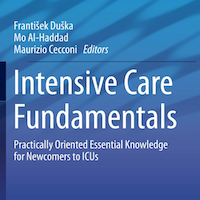
Prognostic Predictor Using Lactate-to-Albumin Ratio in Patients with Cirrhosis and Sepsis
Lactate-to-albumin ratio (LAR) is strongly associated with poor prognosis in patients with cirrhosis and sepsis. LAR is a promising prognostic marker that provides clinicians with a simple and effective tool for risk... read more
Machine Learning to Predict Extubation Success Using the SBT
Among the predictive models that used MOT, VCD, and the spontaneous breathing trial (SBT) as input variables through five machine learning techniques, decision trees and artificial neural networks demonstrated the best diagnostic... read more
Late Hemorrhagic Complication and Unilateral Neck Edema Related to Cannulation in VV-ECMO
This is a rare case of delayed acute unilateral neck edema that developed during veno-venous extracorporeal membrane oxygenation (VV-ECMO). This case underscores the importance of considering a wide range of differential... read more
Non-invasive ICP Monitoring for TBI Patients When Invasive Systems Not Available
Using a mixed-method approach involving literature review and an in-person consensus by experts, a set of recommendations designed to assist clinicians managing traumatic brain injury (TBI) patients using nICP systems plus... read more
POCUS-first vs. CT-first Approach on ED LOS in Patients with Acute Cholecystitis
While point-of-care ultrasound (PoCUS)-first and computed tomography (CT)-first approaches resulted in comparable emergency department (ED) length of stay (LOS) and time to surgical consultation for patients with mild AC,... read more
Mortality Predictor with sPAP in Elderly Critically Ill with Severe COVID-19 Pneumonia
Mortality in general ARDS patients remains high, with many experiencing long-lasting sequelae. Numerous studies have been conducted to identify predictors of mortality in COVID-19 patients, particularly regarding right ventricular... read more
Low Decent Work Perception Among PICU Nurses
The level of decent work perception among PICU nurses in general hospitals is relatively low and is influenced by factors such as age, educational level, professional title, average monthly income, and personal experience... read more
Handbook of ICU EEG Monitoring
Continuous EEG monitoring is an important tool for assessing brain function and allows clinicians to identify malignant EEG patterns quickly and provide more effective care. The revised and updated second edition of Handbook... read more
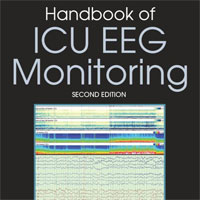
Diastolic Dysfunction Increases AKI Rick in COVID-19 Patients
Diastolic dysfunction increases the risk of acute kidney injury (AKI) in patients with severe COVID-19. Using point-of-care ultrasound (PoCUS) to assess left ventricular diastolic function in the ICU may be a useful parameter... read more
ICU Protocols: A Step-wise Approach, Vol I
The second edition of this highly successful book includes up-to-date notes on the step-wise management of clinical emergencies encountered in everyday intensive care units (ICU). Each thoroughly revised chapter provides... read more

Exploring the Effectiveness of HFNC in the Neurointensive Care Unit
The high flow nasal cannula (HFNC) is becoming increasingly prevalent in both adult and pediatric general intensive care. Despite limited reporting in neurocritical care, we have successfully utilized HFNC in our cohort... read more
Vital Signs and Serum Biomarkers Model Outperforms Shock Index in HCI Prediction
In this study of surgical ICU patients with concern for ongoing bleeding, a prediction model using serial VS and biomarkers outperformed the SI and may help identify those requiring hemorrhage control interventions (HCI). This... read more
Handbook of ICU Therapy
This popular handbook provides a practical guide to managing common and important problems in the critically ill patient, as well as sufficient background information to enable understanding of the principles and rationale... read more
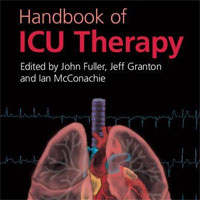
Cytomegalovirus Infection in Immunocompromised ICU Patients: What Intensivists Need To Know
Cytomegalovirus (CMV) infection and disease in critically ill immunocompromised patients pose a unique challenge for intensivists. The broad spectrum of clinical presentations and the difficulty in distinguishing CMV-related... read more
Unlocking the Predictive Power of Nutritional Scores in Septic Patients
This study highlights the significant prognostic utility of nutritional status evaluation in septic patients admitted to internal medicine wards. Among the tools evaluated, the mNUTRIC score—likely because of its dual... read more
Dynamic Nomogram for AKI Prediction in ICU Patients with AHF
After strict screening, 1338 patients with acute heart failure (AHF) were included in the derivation set, and 3,129 in the validation set. Sepsis, use of human albumin, age, mechanical ventilation, aminoglycoside administration,... read more


